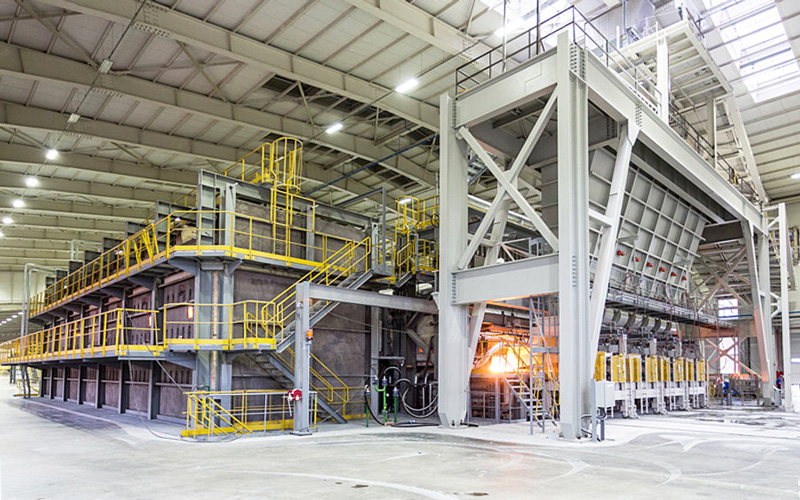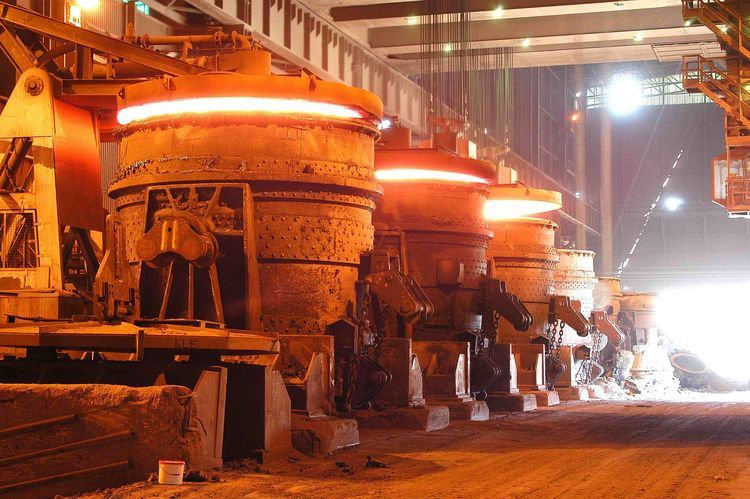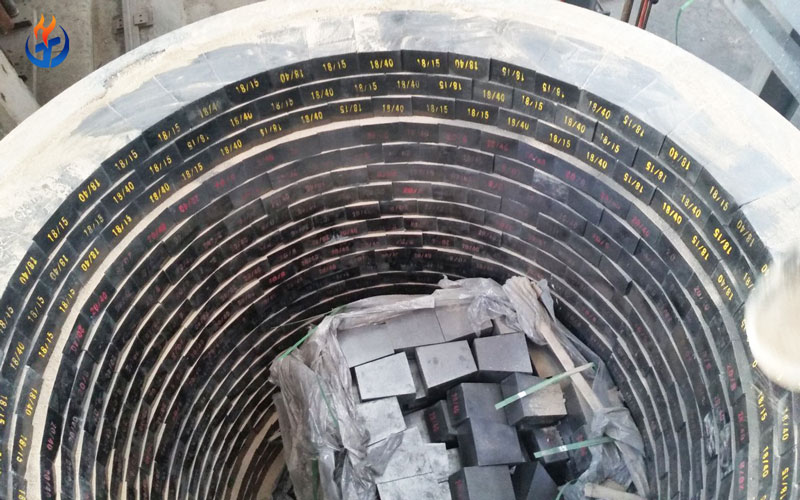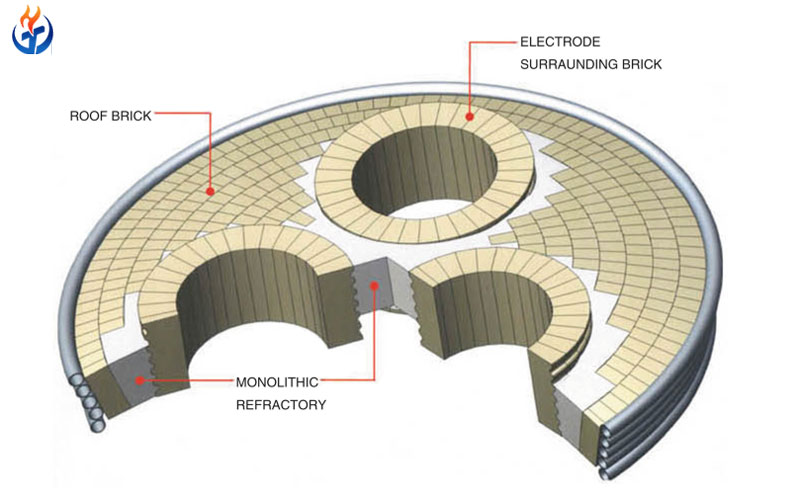The glass industry demands highly specialized high-temperature solutions, particularly for regenerative glass furnaces, which operate under continuous thermal cycling and harsh chemical environments. The heart of these furnaces lies in their refractory linings, which must withstand intense heat, corrosive vapors, and mechanical wear. Selecting the right glass furnace refractory materials is essential for operational stability, product quality, and cost-effective maintenance.
In this article, we will explore the design and operational characteristics of regenerative glass furnaces, review common refractory materials used in their construction, and discuss how regenerative furnace bricks offer optimal performance in various furnace zones.

What is a Regenerative Glass Furnace?
A regenerative glass furnace is a type of continuous melting unit used widely in the glass industry. Its design incorporates two regenerators—brick-lined chambers filled with checker bricks—that recover waste heat from flue gases to preheat incoming combustion air. This process improves fuel efficiency and reduces emissions.
Key features of regenerative furnaces:
Operate at 1,400°C to 1,600°C
Suitable for large-scale glass production (flat glass, container glass)
Use alternating cycles for heat recovery (typically 20–30 minutes)
Have distinct zones: melting tank, doghouse, combustion chamber, regenerator chamber, and superstructure
Each zone experiences different thermal and chemical loads, requiring customized refractory solutions.
Refractory Challenges in Glass Furnaces
The refractory linings in glass furnaces are exposed to:
Extreme temperatures (above 1500°C)
Alkali vapors, especially sodium oxide and potassium oxide
Molten glass corrosion
Thermal cycling stress
Mechanical wear from batch charging and glass movement
To ensure furnace longevity, reduce downtime, and maintain product quality, high-performance glass furnace refractory materials must be used in each furnace zone.
Refractory Materials for Key Furnace Zones
1. Melting Tank Bottom and Walls
This zone contains molten glass and is subject to the highest levels of chemical corrosion and thermal load.
Recommended refractory materials:
Fused cast AZS bricks (Alumina-Zirconia-Silica) – Excellent corrosion resistance against molten glass, especially in wall and throat areas.
Sintered α-Alumina bricks – Ideal for tank bottoms where high mechanical strength is essential.
High-alumina regenerative furnace bricks – Used in areas with moderate corrosion and thermal stress.
Key properties:
Corrosion resistance
Low glass-phase exudation
High mechanical strength
2. Crown (Superstructure)
The crown or roof of the furnace is exposed to alkali vapors and high radiant heat.
Common materials:
Silica bricks – Withstand high temperatures, minimal deformation at 1650°C+, and resist alkali vapors.
Fused cast α-β alumina – In cases where extended service life is required.
Important characteristics:
Creep resistance
Thermal stability
Resistance to alkali vapor attack
3. Checker Chamber (Regenerator Bricks)
This is the core of the regenerative system. Checker bricks store heat from flue gases and transfer it to combustion air.
Preferred regenerative furnace bricks:
High-density fireclay bricks
Mullite bricks – For higher thermal shock resistance
Checker bricks made from andalusite or alumina
Requirements:
High thermal shock resistance (due to cyclical operation)
High refractoriness under load
Low porosity to minimize dust build-up
4. Port Neck and Burner Blocks
These areas are subject to intense thermal cycling and flame impingement.
Material recommendations:
Fused cast AZS – With excellent thermal shock resistance
Alumina-zirconia composite bricks – In burner areas
These components often undergo the most frequent repairs and benefit from prefabricated refractory shapes.
5. Doghouse (Batch Charger Inlet)
The doghouse introduces batch material into the furnace and is a zone of intense abrasion and thermal stress.
Refractory selection:
Fused cast AZS and high alumina bricks
Reinforced insulation bricks for thermal containment
Proper lining reduces cold spot formation and mechanical erosion from batch material.
Types of Refractory Bricks for Regenerative Furnaces
Let’s dive deeper into the regenerative furnace bricks widely used in modern glass furnace construction:
▪ Fused Cast AZS Bricks
Typically used in throat, sidewalls, and glass contact areas
Composed of 33–41% zirconia
Superior corrosion resistance
Low blistering tendency
▪ Fireclay Bricks
Widely used in checkerwork and insulating layers
Affordable and suitable for areas with moderate thermal stress
Good thermal shock resistance
▪ Silica Bricks
Used in furnace crown and regenerator walls
High refractoriness (up to 1700°C)
Minimal thermal expansion
▪ Mullite Bricks
Withstand cyclic thermal loading
Used in checker bricks, ports, and walls
Excellent thermal shock resistance and mechanical strength
▪ Alumina Bricks
High-purity varieties used in tank bottom and port crowns
Excellent resistance to alkali corrosion
Conclusion
Refractory materials are the backbone of regenerative glass furnaces. Each furnace zone—from the melting tank to the regenerator—requires tailored refractory solutions to handle specific thermal, chemical, and mechanical stresses. By selecting high-performance glass furnace refractory materials such as AZS, silica, alumina, and fireclay, operators can enhance efficiency, extend furnace life, and reduce maintenance costs.
With innovations in regenerative furnace bricks and proactive maintenance strategies, modern glass furnaces can achieve long, stable campaigns while maintaining high-quality glass output.
Conclusion
Refractory materials are the unsung heroes of modern thermal power plants, silently withstanding extreme temperatures, corrosion, and wear every day. Whether it’s high-strength power plant bricks in a boiler wall or flexible castables in a burner throat, choosing the right thermal power refractory solution is vital to keeping operations safe, efficient, and cost-effective.
As energy production evolves, so too must refractory solutions—meeting the demands of cleaner fuels, higher efficiency targets, and longer service intervals. With expert material selection, regular maintenance, and a trusted supplier, thermal power plants can continue to deliver reliable energy while keeping operational costs under control.
Looking for dependable refractory solutions for your thermal power plant? Contact our technical team today for custom recommendations, product samples, and installation support. Welcome to contact Xintai Refractory.



